- Annotations
- User-generated material within the project; can include notes, measurements, and markup.
- Attaching
- Opening, or attaching, indexed scan files in other Autodesk software to provide realistic context for 3D models.
- Clipping
- Provides a way to limit what is displayed in the point cloud. There are two methods for clipping:
- During indexing:
As you import scan files, you can set the size of a point cloud by specifying a range that represents:
- the distance from the scanner
- the minimum and maximum intensity values
- On the project screen: Select an area of the point cloud and specify whether to clip inside or outside the boundaries.

- During indexing:
As you import scan files, you can set the size of a point cloud by specifying a range that represents:
- Color Modes
- A method of obtaining information about a point cloud by displaying it in colors that indicate information such as elevation, intensity, and normal directions.
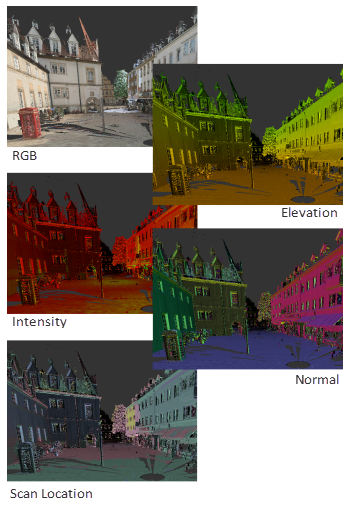
- Edge Highlighting (lighting settings)
- A display style based on the darkening of points that are inferred to lie on the same plane.
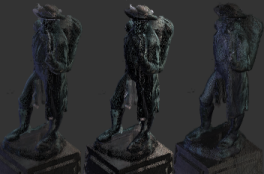
- Elevation
- A view of the model in which the z axis is pointing up. You can set an Elevation color mode that uses color to identify the height of various elements in the point cloud.
- Fence
-
A tool that selects an area that is bounded by the points you select; especially useful for selecting irregularly shaped areas.
- Field of View
- The extents of the camera view. This option is set in Preferences.
- Flyout
- In the UI, a set of tiles (or buttons) that expand and collapse as the cursor moves across the base tile.
- Gradient Ramp
- A linear band of colors that represent height (Elevation) or materials (Intensity). You can use one of five preset color schemes or create a custom gradient ramp.
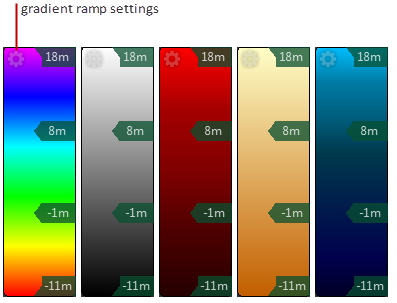
- Highlight Edges (Limit Box boundaries)
- A method of highlighting the intersection of points with the boundaries of a Limit Box.
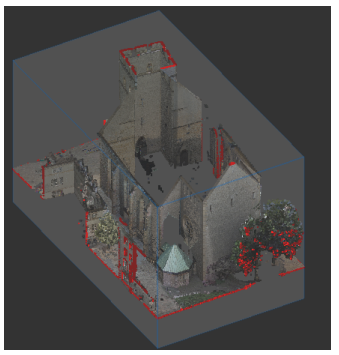
- Hotkeys
- Also known as keyboard shortcuts, this describes the user pressing a singular or combination of keys in order to execute a command. For ReCap 360's purpose, these actions might also include the mouse. For a list of hotkeys from the main screen, click here.
- Indexing
- The process of structuring a raw scan file so that it can be opened in a CAD product.
- Intensity
-
Color mode that controls chroma, colorfulness, and saturation.
- Lighting Sides
- Specifies whether the lighting direction should be from a single side, two sides, or be more general.
- Limit Box
- A temporary 3D box that defines the visible extents of the point cloud.
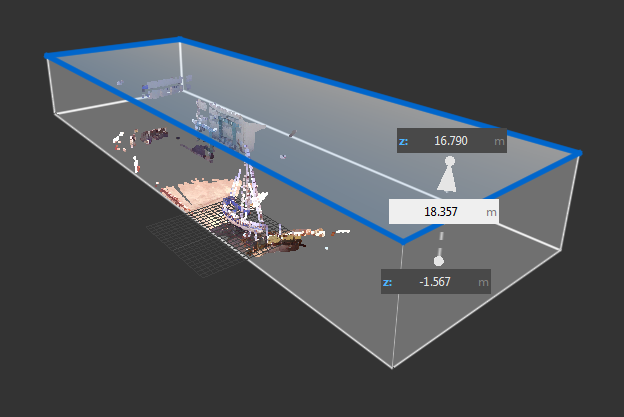
- Mesh
- Common type of 3D modeling that includes a collection of vertices, edges, and faces that reflect the shape of an object. Mesh modeling allows for capabilities of creasing, freeform sculpting, and smoothing.
- Mini-map
- A top-down map of the project with interactive points associated with individual scans.
- Mirror Balls
- Proprietary term; should appear only for navigating through structured scan data types. Essentially, they reflect the origin of the laser scan and provide RealView access.
- Normals
-
Objects (such as vectors or lines) that are perpendicular to another object; for ReCap 360's purpose, point cloud normal help to identify surfaces.
- Ortho Mode
- Orthogonal measurement mode; measure only in right angles / limits the cursor to horizontal or vertical directions.
- Orthophoto
- An aerial photograph geometrically corrected to a uniform scale; the photo will ultimately have the same lack of distortion as a map.
- Photogrammetry
- The science of using photography to measure distances between objects; can actually map exact surface points used to create mesh.
- Pipe Snap
-
Specific to ReCap 360 (Pro); when this mode is active the distance tool will automatically detect any cylindrical object under the cursor.
- Point
- An object/data that occupies a single coordinate (x,y,z) location.
- Point Cloud
- A set of points which are often are intended to represent the external surface of an object.
- Point Cloud Face
- A portion of a point cloud in which all the points are in planar alignment.
- Project Screen
- The screen where you can view and modify aspects of an indexed point cloud.

- RCS format (proprietary)
- Reality Capture Scan exclusive to ReCap 360; when importing, the program converts to RCS format, which can be read by other Autodesk applications.
- RealView
- 360° panoramic mode that allows users to navigate the project in real-world perception.
- Registration
- Specific to scan projects; merges scans into one cohesive point cloud, either automatically (Auto-Registration) or manually (Manual Registration).
- Scan Location
- The location of the scanner when it captured the data.
- Scan Regions
- Non-overlapping areas that are defined in a point cloud for the purpose of filtering the display of meaningful volumes in the scene.
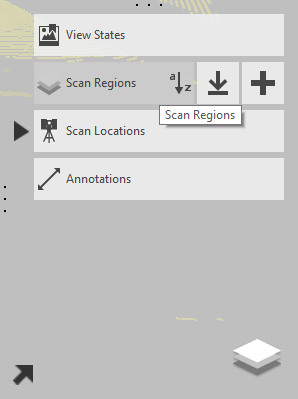
- Scanning
- The process of capturing point data using a 3D laser scanner.
- Scene
- The point cloud, as displayed on the Project Screen.
- Shader Model
- Options are Phong and Lambert; shader stages in the rendering pipeline.
- Smooth Gradient Ramp
- A gradient ramp with a blended transition between colors.

- Stepped Gradient Ramp
- A gradient ramp in which the colors remain distinct from one another.

- Stitching
- Specific to photo projects; similar to registration, but links images together by either automatic 3D mesh reconstruction of a group of images or by manual user input.
- Structured scan data
- Can include file types CLR, FLS, ZFS, PRJ, PTX, PTG, some types of CL3, and some types of E57.
- Tiles
- The "buttons" that initiate activities or change settings.
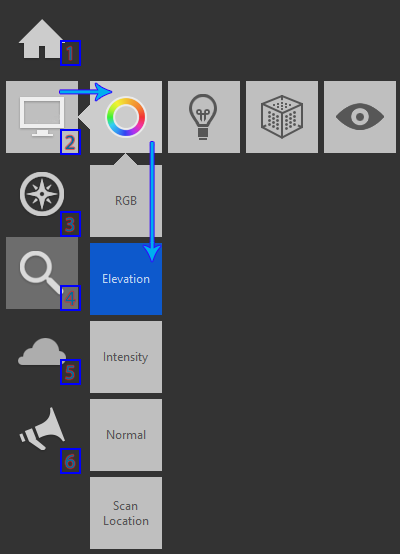
- UAV
- Unmanned Aerial Vehicle; unpiloted, either remote-controlled or autonomously programmed. ReCap 360 is one of the few programs that manages photography files taken from these vehicles.